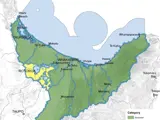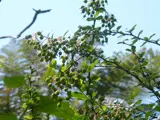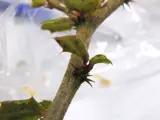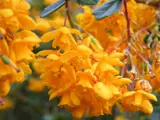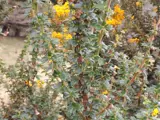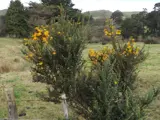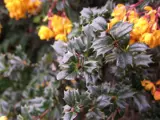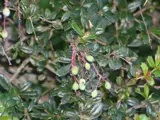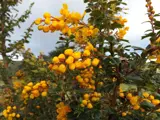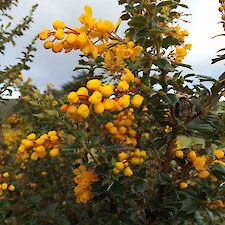 Darwin’s barberry
Darwin’s barberry
Common name: Darwin’s barberry
Botanical name: Berberis darwinii
Management programme: Exclusion and Progressive Containment
Darwin’s barberry is named after Charles Darwin – who discovered it in South America in 1835. It originates from Chile and Argentina and was brought to New Zealand for hedging. Unfortunately, it ‘jumped the fence’ with the help of bird-dispersed seeds and has been deemed a pest plant since the 1940s.
Why is it a pest?
- Darwin’s barberry can invade a wide range of landscapes, forming thick colonies which outcompete and shade out native species.
- After grazing, re-sprouting occurs from all parts of the plant.
- It is considered a threat to forestry, agriculture and native plant ecosystems.
Where is it found?
- The only known sites of Darwin’s barberry in the Bay of Plenty are in the Whakarewarewa forest and further south near Rainbow Mountain.
- It is found in disturbed forest, bush margins, pasture, tussock, and wasteland - areas with low to moderate soil fertility.
What does it look like?
- Darwin’s barberry is a spiny shrub, 1-3m tall.
- Its leaves are shiny dark green and spiny (but smaller than holly)
- Stems are tough, woody, and hairy with five-pronged needle-sharp spines
- It has drooping clusters of deep orange flowers (5-7mm in diameter) from July through to February.
- Flowers develop into hanging clusters of oval purple-black berries with a white waxy coating. Seeds establish November to February.
What are the rules?
Darwin’s barberry is both an Exclusion and Progressive Containment pest in the Bay of Plenty. Please see the map below to see which rules apply.
Exclusion
Exclusion pests are not known to be established in the Bay of Plenty region. The Bay of Plenty Regional Council is responsible for managing new incursions into the region.
Progressive Containment
Progressive Containment species are pests which the Council aims to prevent from spreading, reduce the distribution of, or eradicate within parts of the region over time.
Landowners or occupiers are responsible for the control of Progressive Containment species on their property. Council may enforce the control of these pest species.
How do you get rid of it?
Exclusion
Please do not control Darwin’s barberry yourself. Contact Council and a biosecurity officer will be in touch to get further information and arrange a site visit.
Progressive containment
- Small plants can be manually removed by digging out.
- Scattered, larger plants can be controlled year-round using stump treatment with herbicide.
- Higher numbers of smaller plants can be controlled late spring and summer by spraying foliage with herbicide and penetrant. Thorough coverage and penetration of the bushes is important. All foliage should be wet to the point of runoff. However, manually removing smaller plants may be cheaper and easier.
Follow up treatment is likely to be required. Replant bare sights following control to reduce seeding.
CAUTION: When using any herbicide or pesticide, PLEASE READ THE LABEL THOROUGHLY to ensure that all instructions and directions for the purchase, use and storage of the product, are followed and adhered to.
Read more on pest control advice, information and regulations.
Images

